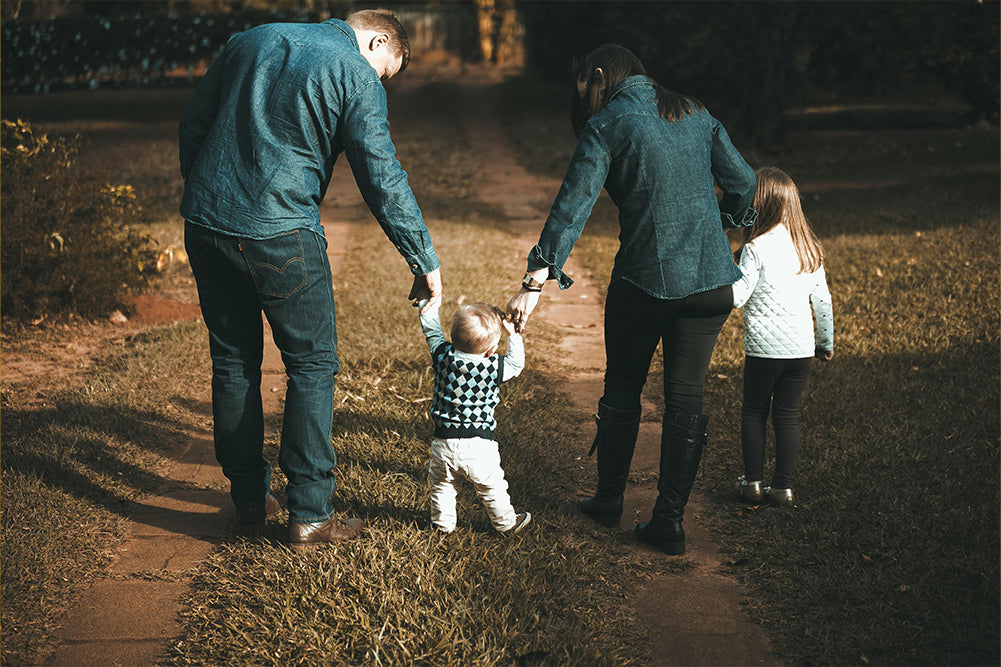Your Cart is Empty
May 21, 2024 4 min read

Water safety is not something that should be taken lightly, especially when it comes to your family. No matter your geographic location, there is probably some sort of drowning hazard–whether it be a body of water, a swimming pool, or a swamp. Even if you live in an urban area with no access to these hazards, water safety could pertain to you by means of contaminated tap water. No matter the age, it is never too early to teach our loved ones the importance of water contamination and safety.
One way of teaching your family about water safety is by leading by example. This could take place by sparking a conversation atthe dinner table about saving water, and then giving them practical ways to do so. For example, if your children see you turning off the sink while brushing your teeth, they are more apt to do the same.
Additionally, involving your family in activities that fight pollution can also teach the importance of keeping our water sources clean. Practicing disposing trash properly and never polluting oceans, lakes, or streams is a habit that should be passed on to your children (1). Participating in a shore clean-up day is an easy way to put these skills into action.
Leading by example can also take the form of ensuring you are prepared for any water-related emergencies. The Red Cross offers free water safety courses to “apply water safety to common environments and situations where children are most at risk for drowning” (2).
While leading your family in the right direction when it comes to water safety is an important first step, practicing preparedness for natural disasters or drowning incidents will make these habits second nature in times of crisis. Whether you live near a body of water or in a flood zone, teaching your children to swim can be a life saver. Currently, “the majority of deaths that occur during floods are due to drowning,” so enrolling your kids in swim lessons from an early age is crucial (3).
If you live in a flood zone, it is also recommended to run evacuation drills with your family. In doing so, your family can be on the same page when it comes to where they are headed, particularly if an exit is blocked. Planning for these emergency situations ahead of time can lessen panic if a natural disaster strikes.
Creating an emergency response kit with your family is another practical way to learn more about water safety. Emergency response kits can vary based on circumstances, but almost all include nonperishable food, a first aid kit, and water. It is suggested that 3 gallons of water should be stored per member of your household in case of an emergency (4). However, carrying this much water is heavy and requires ample storage space. Instead, consider packing a water filter instead. Seychelle’s hollow membrane straw, for example, is compact, lightweight, and can filter up to 1,320 gallons in a single straw. By including a water filter in your emergency response kit, your family is guaranteed clean water for almost any emergency.
Teaching your family about water contamination can keep everyone healthy and informed. Water in your own home may be contaminated by various pollutants, including lead,chromium 6, and other heavy metals. These contaminants and many others can seep into groundwater sources through industrial runoff, fertilizers, and leaky septic systems, to name a few. Double checking your septic system is up-to-date can ensure that your family is doing their part to fight tap water pollution. Additionally, using organic fertilizers can keep local groundwater sources from being contaminated by chemical runoff (1).
Lastly, using a water filter at home can teach your family about the prevalence of water contamination in your area, all the while keeping everyone at home safe from consuming contaminated water. Your chosen water filter should be independently lab-tested to filter out organic, inorganic, and aesthetic contaminants. For peace of mind and to ensure your water is as safe as can be, consider a Seychelle water pitcher. With Seychelle, you will know what is in your water, every time.
Because of the prevalence of water in everyday life, it is important to make sure your families are informed about water safety and contamination. Teaching them about water safety can take many forms, like leading by example. If your family sees you combating pollution and water waste, they will likely do the same. In addition, practicing preparedness in case of a natural disaster can be the difference between life and death. This can take the form of teaching your kids how to swim or packing an emergency response kit, to name a few. Lastly, understanding water contamination and its risks can help keep your family healthier for longer.
How do you teach kids about water pollution?
Teaching kids about water pollution can take many forms. For example, teaching them not to litter, participating in a beach clean up, and using chemical-free fertilizers while gardening can all teach your children the importance of clean water.
How do you explain water safety to a child?
While water safety tips depend greatly on your geographic location, teaching your child to swim is the easiest and most effective way to keep them safe.
How can we protect water from contamination?
Water contamination can come from a variety of sources, including agricultural runoff, industrial waste, and corroding pipes. These contaminants need to be taken care of at the source.
References